Model Context Protocol (MCP) finally gives AI models a way to access the business data needed to make them really useful at work. CData MCP Servers have the depth and performance to make sure AI has access to all of the answers.
Try them now for free →Create Amazon Athena-Connected Applications in Appsmith
Connect to Amazon Athena Data via CData Connect Cloud in Appsmith and create custom business applications with real-time access to Amazon Athena data.
Appsmith is an open-source internal tool builder that allows teams to quickly and easily build a UI to help improve their business operations. When combined with CData Connect Cloud, you gain immediate access to Amazon Athena data for business applications. This article outlines the process of connecting to Amazon Athena using Connect Cloud and creating a basic application from Amazon Athena data within Appsmith.
CData Connect Cloud offers a pure SQL Server, cloud-to-cloud interface for Amazon Athena, enabling the creation of business applications directly from live Amazon Athena data within Appsmith, all without the need for data replication to a native database. As you build applications, Appsmith generates SQL queries to gather data. With its inherent optimized data processing capabilities, CData Connect Cloud efficiently channels all supported SQL operations, including filters and JOINs, directly to Amazon Athena. This leverages server-side processing to swiftly deliver the requested Amazon Athena data.
About Amazon Athena Data Integration
CData provides the easiest way to access and integrate live data from Amazon Athena. Customers use CData connectivity to:
- Authenticate securely using a variety of methods, including IAM credentials, access keys, and Instance Profiles, catering to diverse security needs and simplifying the authentication process.
- Streamline their setup and quickly resolve issue with detailed error messaging.
- Enhance performance and minimize strain on client resources with server-side query execution.
Users frequently integrate Athena with analytics tools like Tableau, Power BI, and Excel for in-depth analytics from their preferred tools.
To learn more about unique Amazon Athena use cases with CData, check out our blog post: https://www.cdata.com/blog/amazon-athena-use-cases.
Getting Started
Configure Amazon Athena Connectivity for Appsmith
Connectivity to Amazon Athena from Appsmith is made possible through CData Connect Cloud. To work with Amazon Athena data from Appsmith, we start by creating and configuring a Amazon Athena connection.
-
Log into Connect Cloud, click Connections and click Add Connection
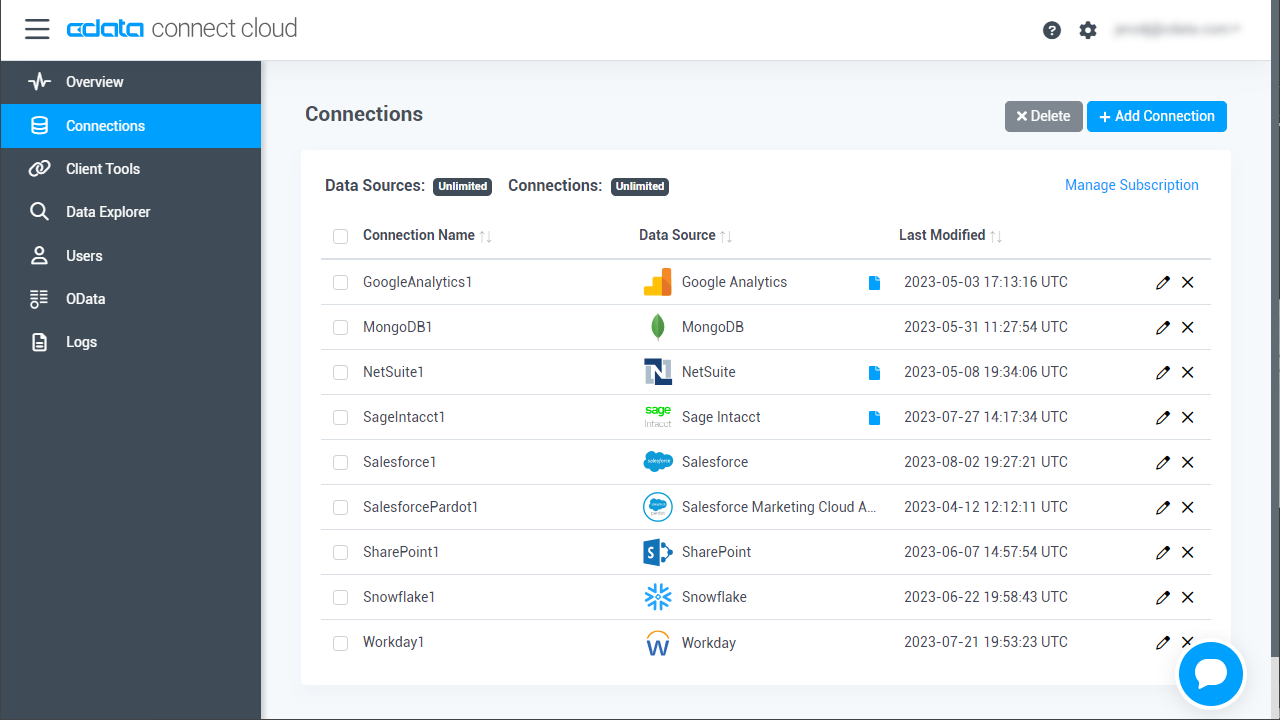
-
Select "Amazon Athena" from the Add Connection panel
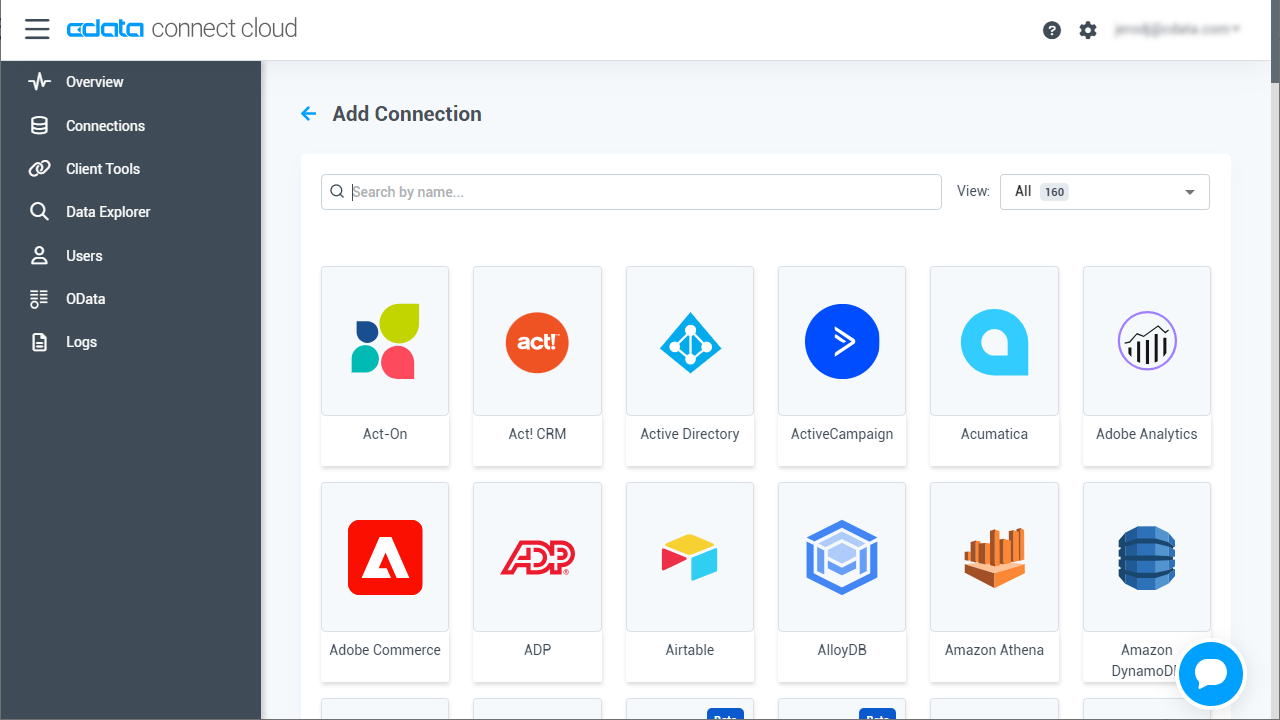
-
Enter the necessary authentication properties to connect to Amazon Athena.
Authenticating to Amazon Athena
To authorize Amazon Athena requests, provide the credentials for an administrator account or for an IAM user with custom permissions: Set AccessKey to the access key Id. Set SecretKey to the secret access key.
Note: Though you can connect as the AWS account administrator, it is recommended to use IAM user credentials to access AWS services.
Obtaining the Access Key
To obtain the credentials for an IAM user, follow the steps below:
- Sign into the IAM console.
- In the navigation pane, select Users.
- To create or manage the access keys for a user, select the user and then select the Security Credentials tab.
To obtain the credentials for your AWS root account, follow the steps below:
- Sign into the AWS Management console with the credentials for your root account.
- Select your account name or number and select My Security Credentials in the menu that is displayed.
- Click Continue to Security Credentials and expand the Access Keys section to manage or create root account access keys.
Authenticating from an EC2 Instance
If you are using the CData Data Provider for Amazon Athena 2018 from an EC2 Instance and have an IAM Role assigned to the instance, you can use the IAM Role to authenticate. To do so, set UseEC2Roles to true and leave AccessKey and SecretKey empty. The CData Data Provider for Amazon Athena 2018 will automatically obtain your IAM Role credentials and authenticate with them.
Authenticating as an AWS Role
In many situations it may be preferable to use an IAM role for authentication instead of the direct security credentials of an AWS root user. An AWS role may be used instead by specifying the RoleARN. This will cause the CData Data Provider for Amazon Athena 2018 to attempt to retrieve credentials for the specified role. If you are connecting to AWS (instead of already being connected such as on an EC2 instance), you must additionally specify the AccessKey and SecretKey of an IAM user to assume the role for. Roles may not be used when specifying the AccessKey and SecretKey of an AWS root user.
Authenticating with MFA
For users and roles that require Multi-factor Authentication, specify the MFASerialNumber and MFAToken connection properties. This will cause the CData Data Provider for Amazon Athena 2018 to submit the MFA credentials in a request to retrieve temporary authentication credentials. Note that the duration of the temporary credentials may be controlled via the TemporaryTokenDuration (default 3600 seconds).
Connecting to Amazon Athena
In addition to the AccessKey and SecretKey properties, specify Database, S3StagingDirectory and Region. Set Region to the region where your Amazon Athena data is hosted. Set S3StagingDirectory to a folder in S3 where you would like to store the results of queries.
If Database is not set in the connection, the data provider connects to the default database set in Amazon Athena.
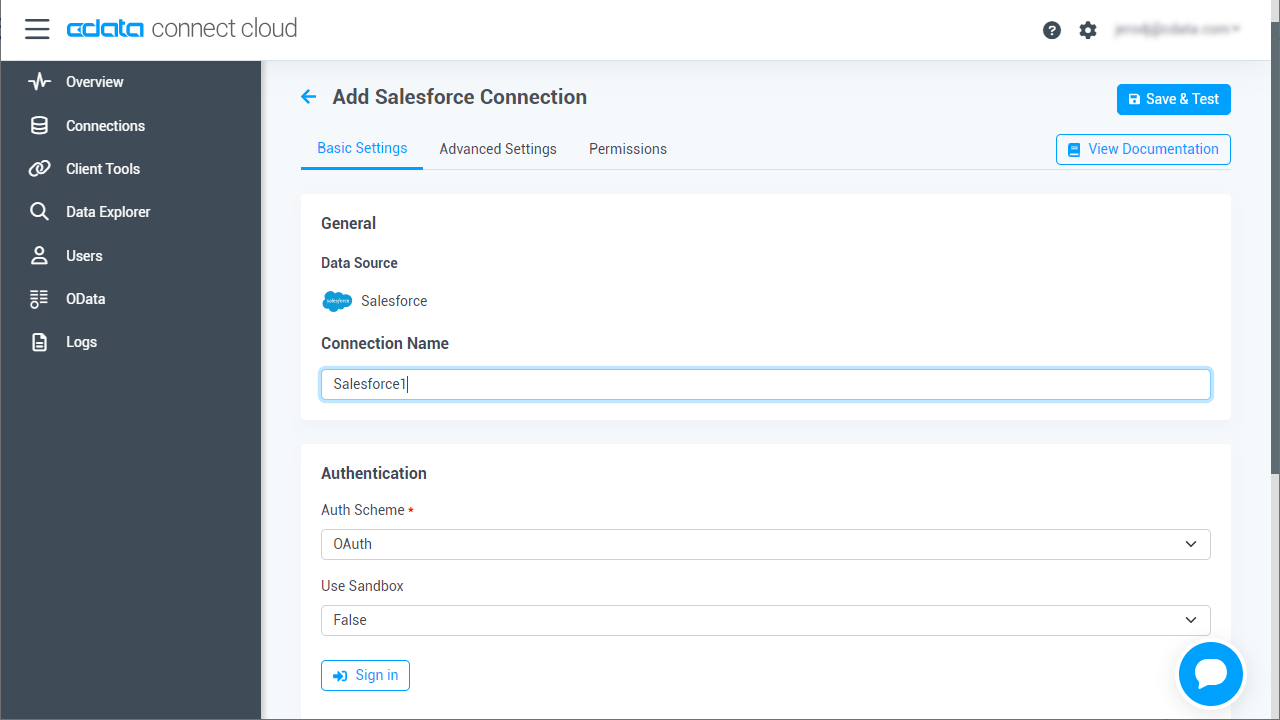
- Click Create & Test
-
Navigate to the Permissions tab in the Add Amazon Athena Connection page and update the User-based permissions.
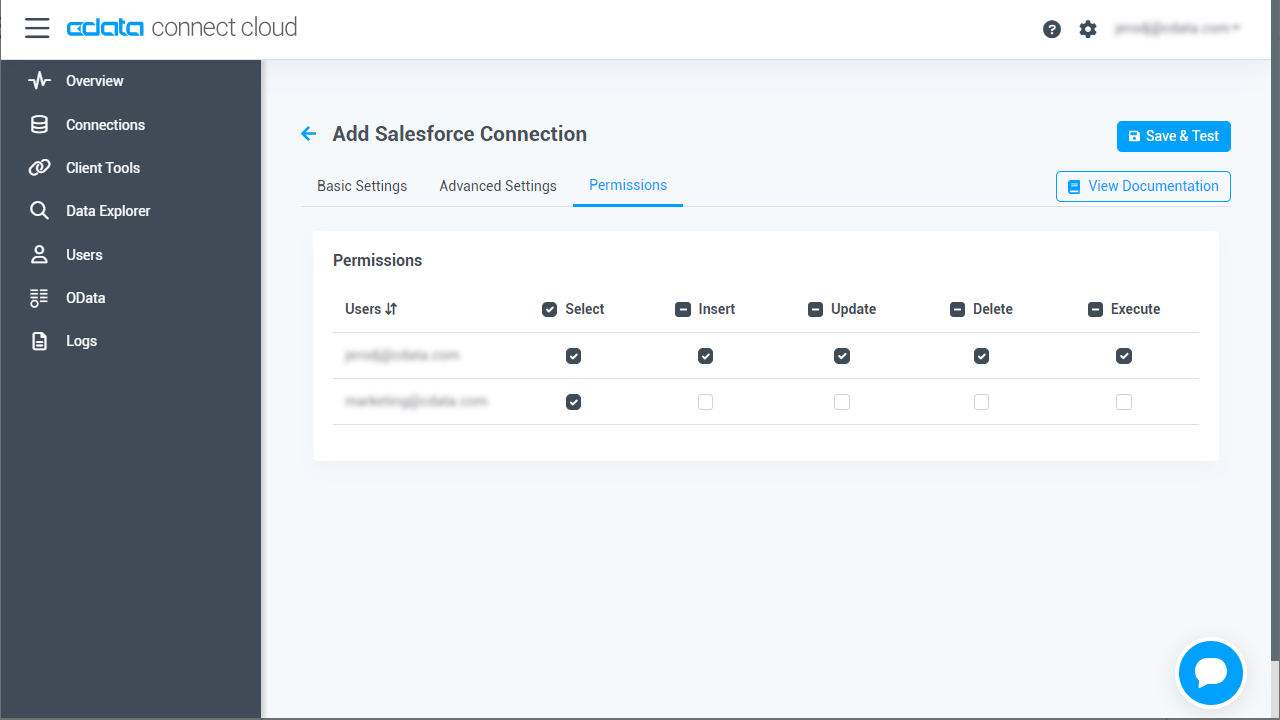
Add a Personal Access Token
When connecting to Connect Cloud through the REST API, the OData API, or the Virtual SQL Server, a Personal Access Token (PAT) is used to authenticate the connection to Connect Cloud. It is best practice to create a separate PAT for each service to maintain granularity of access.
- Click on the Gear icon () at the top right of the Connect Cloud app to open the settings page.
- On the Settings page, go to the Access Tokens section and click Create PAT.
-
Give the PAT a name and click Create.
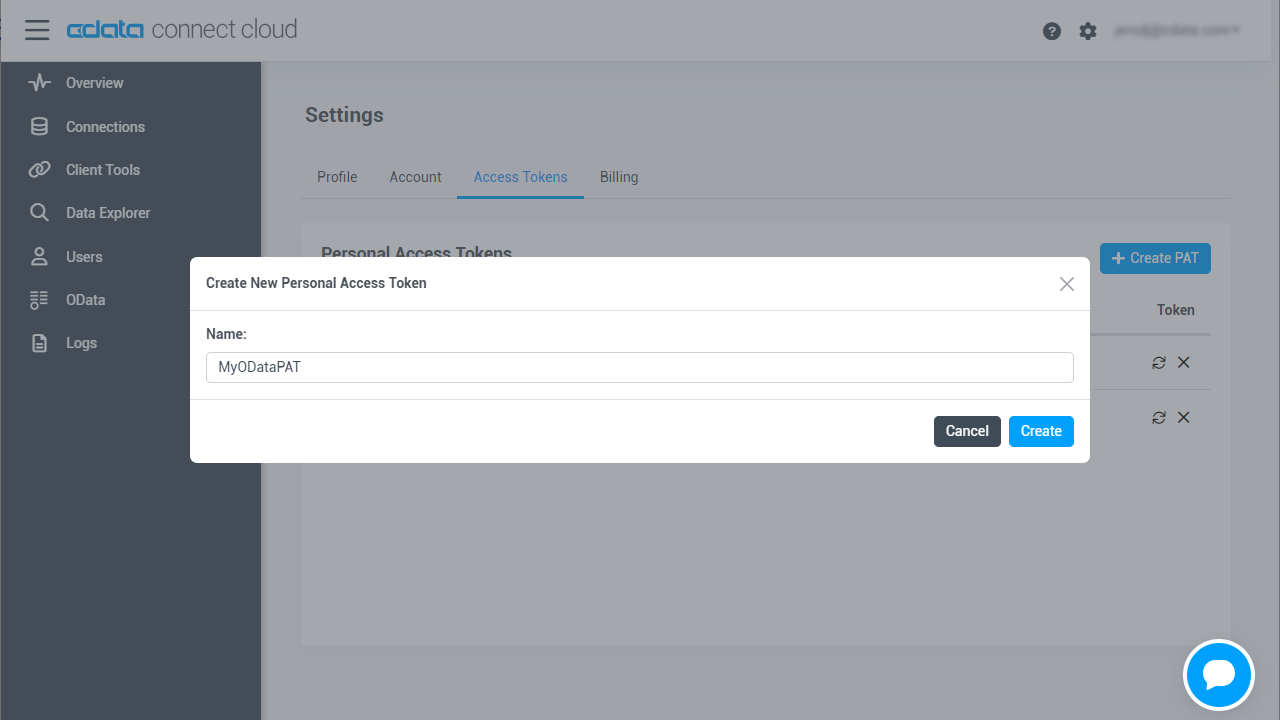
- The personal access token is only visible at creation, so be sure to copy it and store it securely for future use.
With the connection configured and a PAT generated, we are ready to connect to Amazon Athena data from Appsmith.
Create an Appsmith Application from live Amazon Athena Data
To establish a connection from Appsmith to the CData Connect Cloud Virtual SQL Server, follow these steps:
Connect to Amazon Athena in Appsmith
- Log in to your Appsmith instance and create a new application.
-
In the new application, open the Data page and select Bring your data.
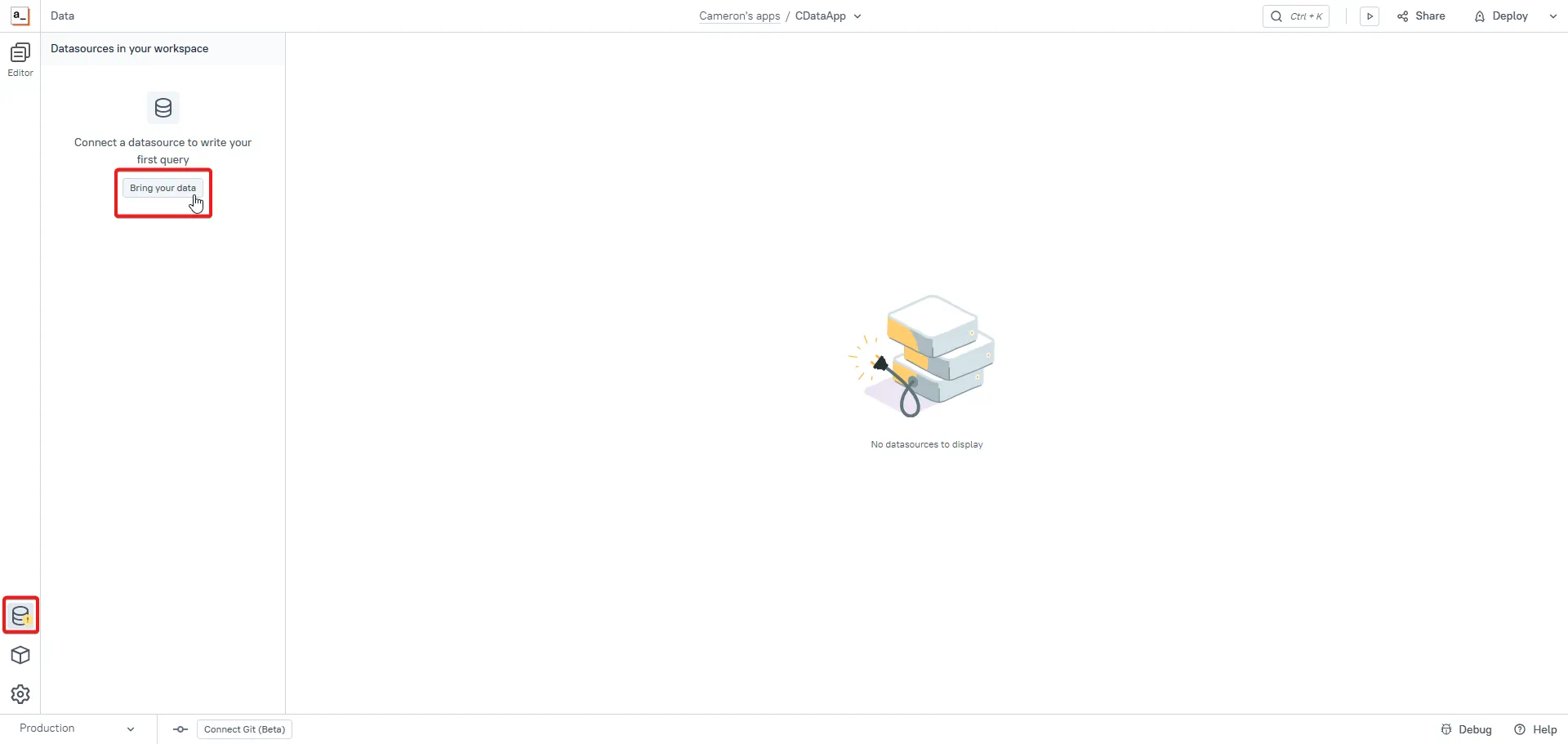
-
On this page, you can search for Microsoft SQL Server and select it as your data source.

-
Enter a name for the new data source and then enter the following connection settings:
- Host address: tds.cdata.com
- Port: 14333
- Database name: enter the Connection Name of the CData Connect Cloud data source you want to connect to (for example, AmazonAthena1).
- Username: enter your CData Connect Cloud username. This is displayed in the top-right corner of the CData Connect Cloud interface. For example, test@cdata.com.
- Password: enter the PAT you previously generated.
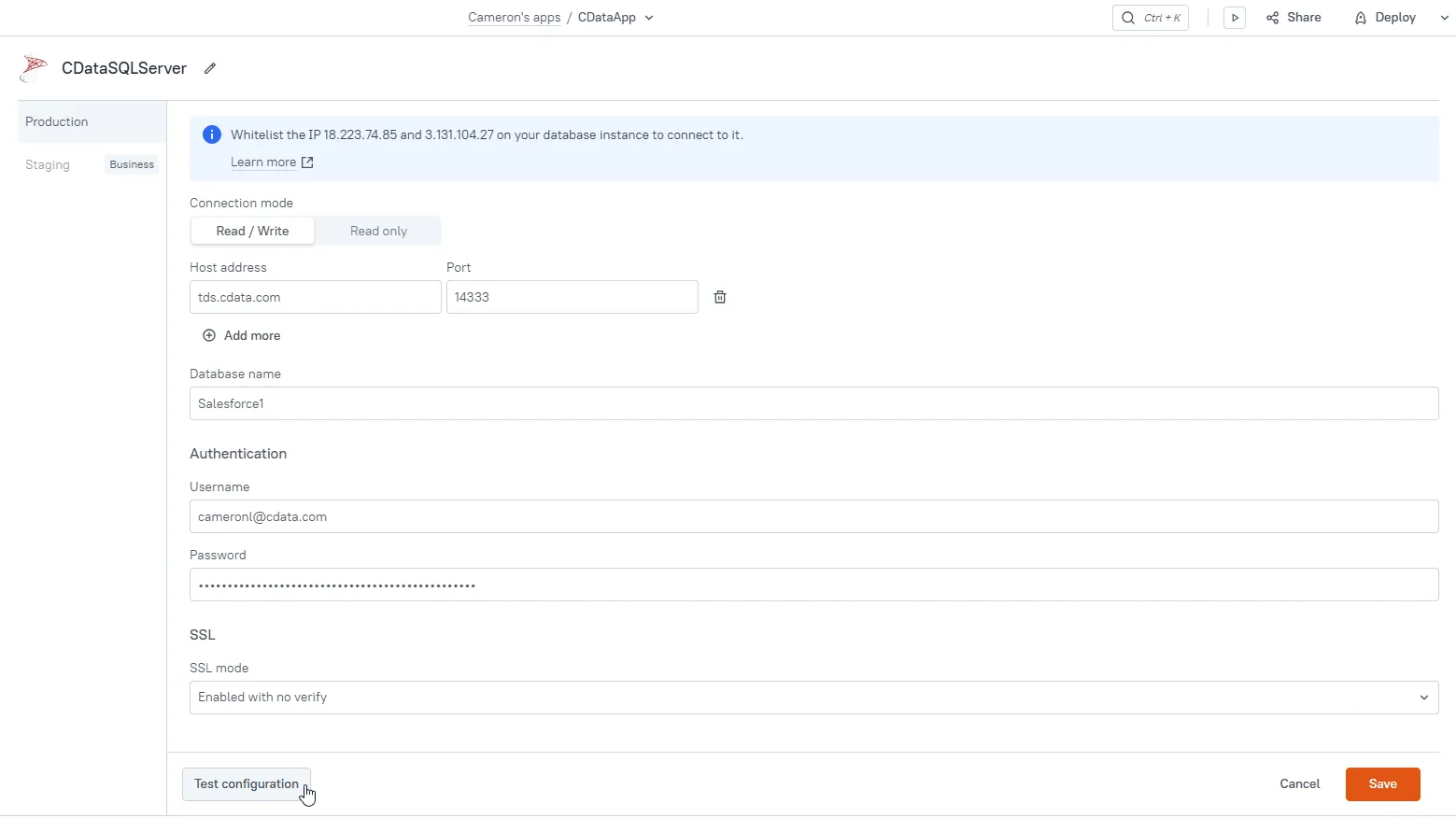
- Click Test configuration to confirm a successful connection, then click Save to save the datasource.
Create a new query
With a connection configured to a datasource, we can add a SQL query to actually retrieve data from the data source.
-
On the screen with the new data source, click New Query.

-
This opens the Query Editor to enter a SQL query to select data. To assist with specifying a SQL query, use the Explorer of CData Connect Cloud to preview the SQL queries and the data you want to retrieve.
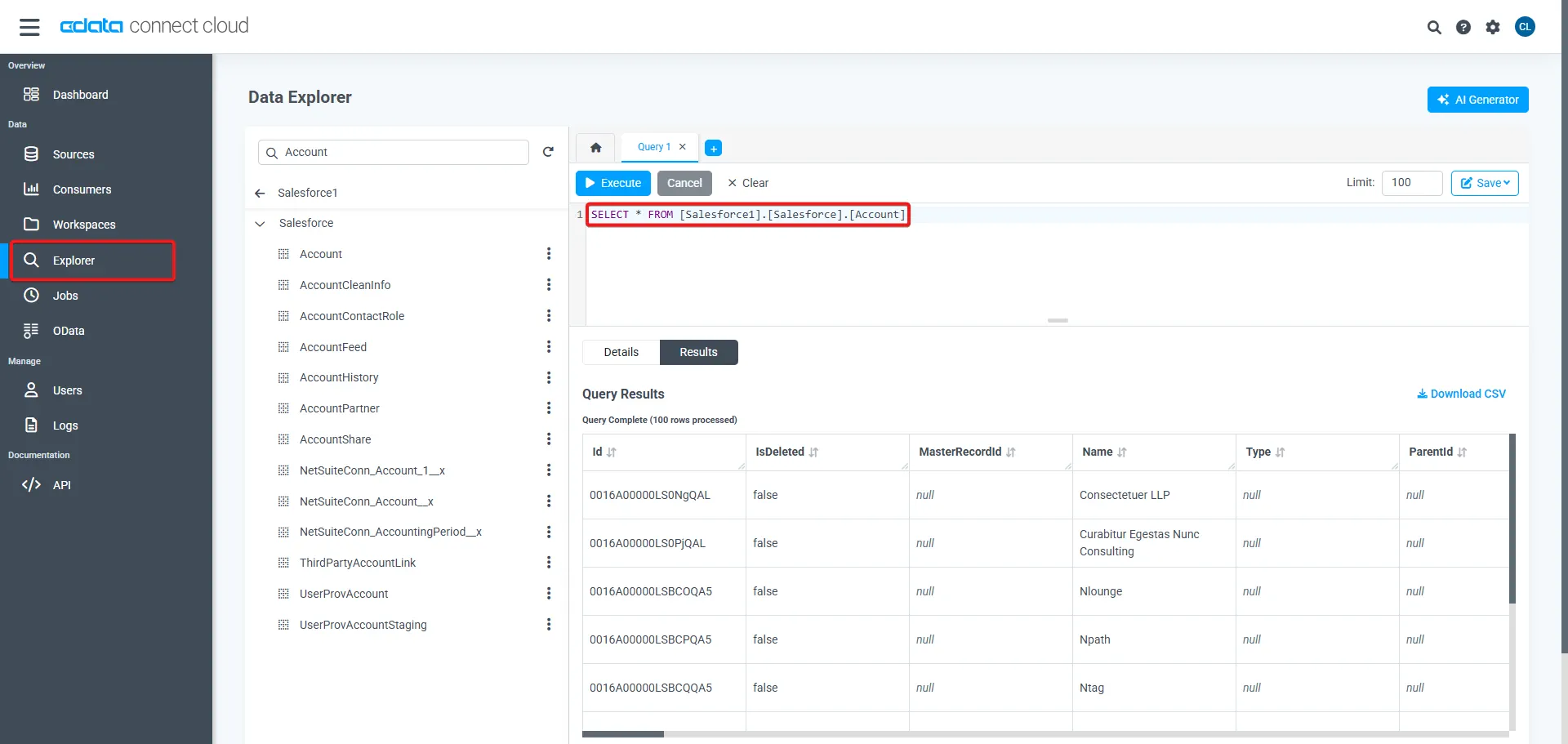
-
After creating the SQL query, return to the Query Editor in Appsmith and enter the SQL query, then click Run.
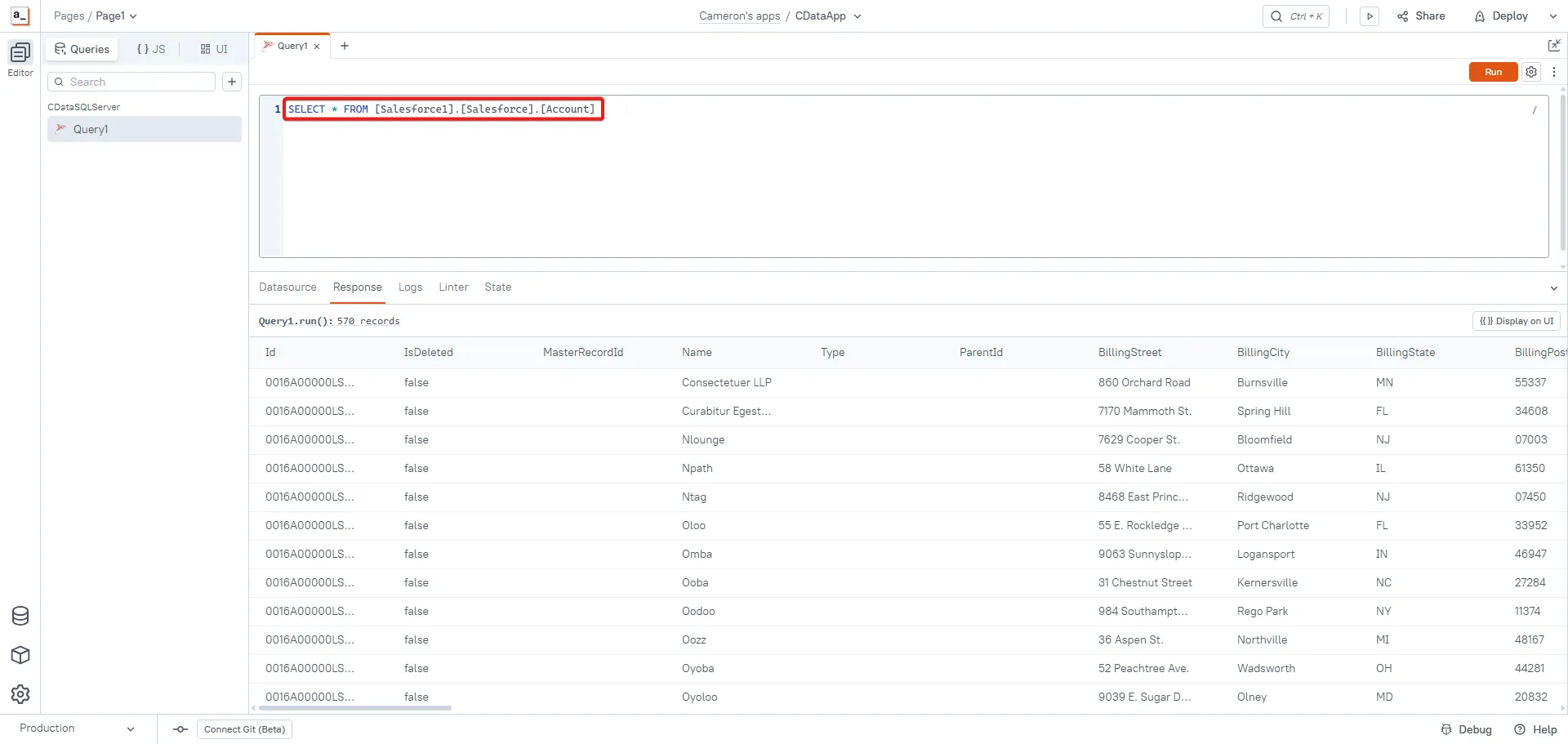
- Once the query successfully runs, all that remains is to set up the Page to display the data retrieved.
Display Amazon Athena data
-
Open the UI tab and click New UI element.

-
Choose a new UI element to grab, then drag and place the element on the page.
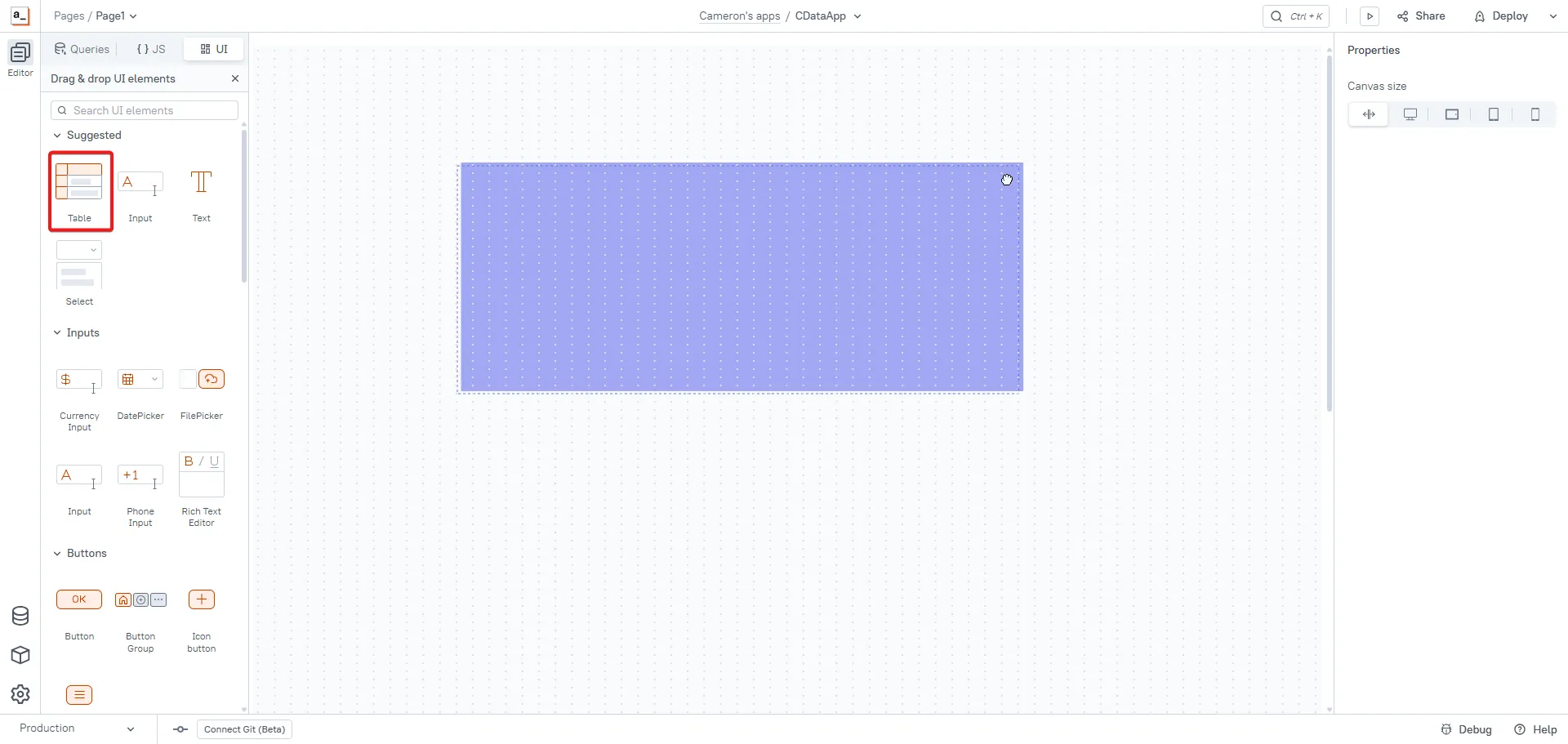
-
Click Connect data on the new UI element, then select the query previously created.
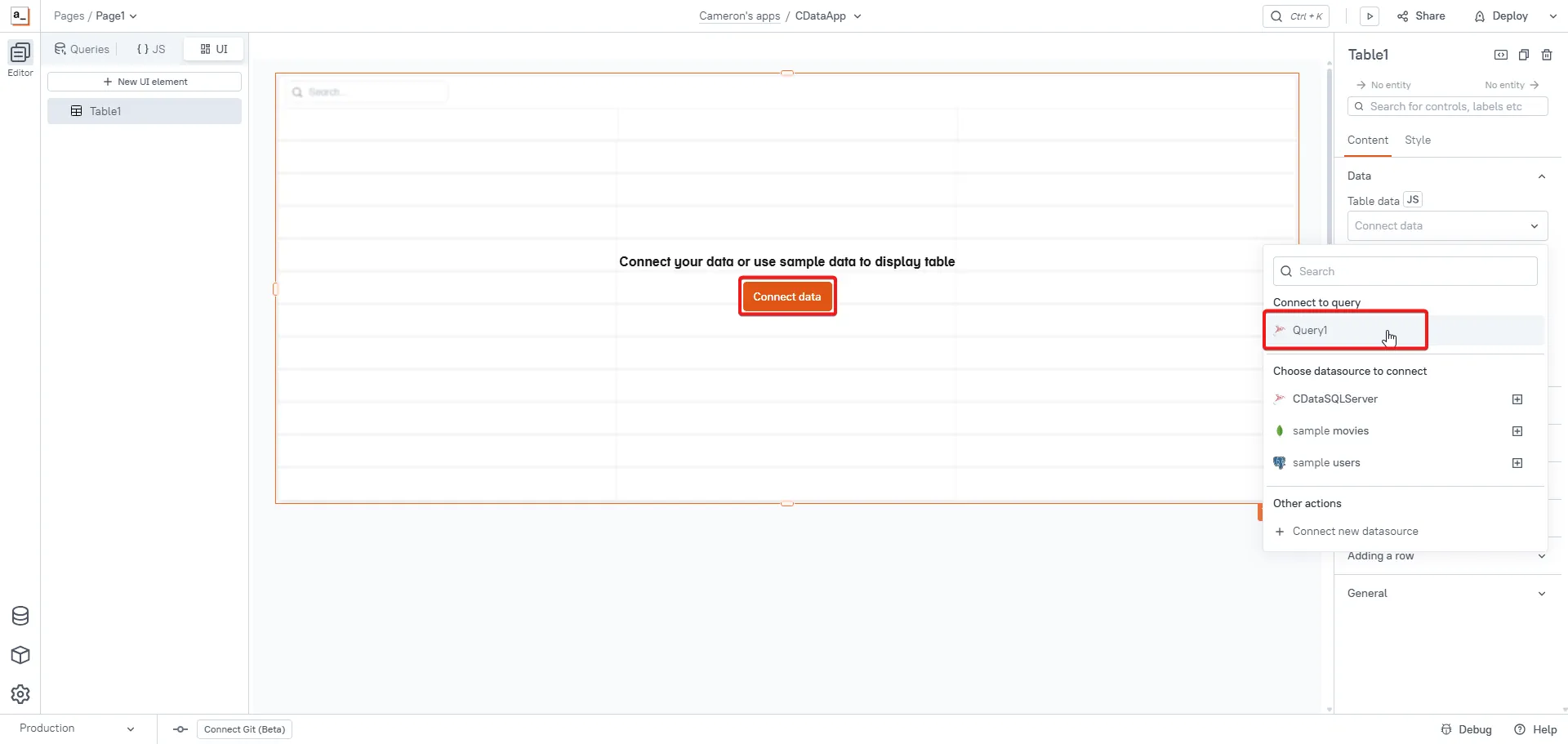
-
With the data connected, it is then displayed in the UI element.
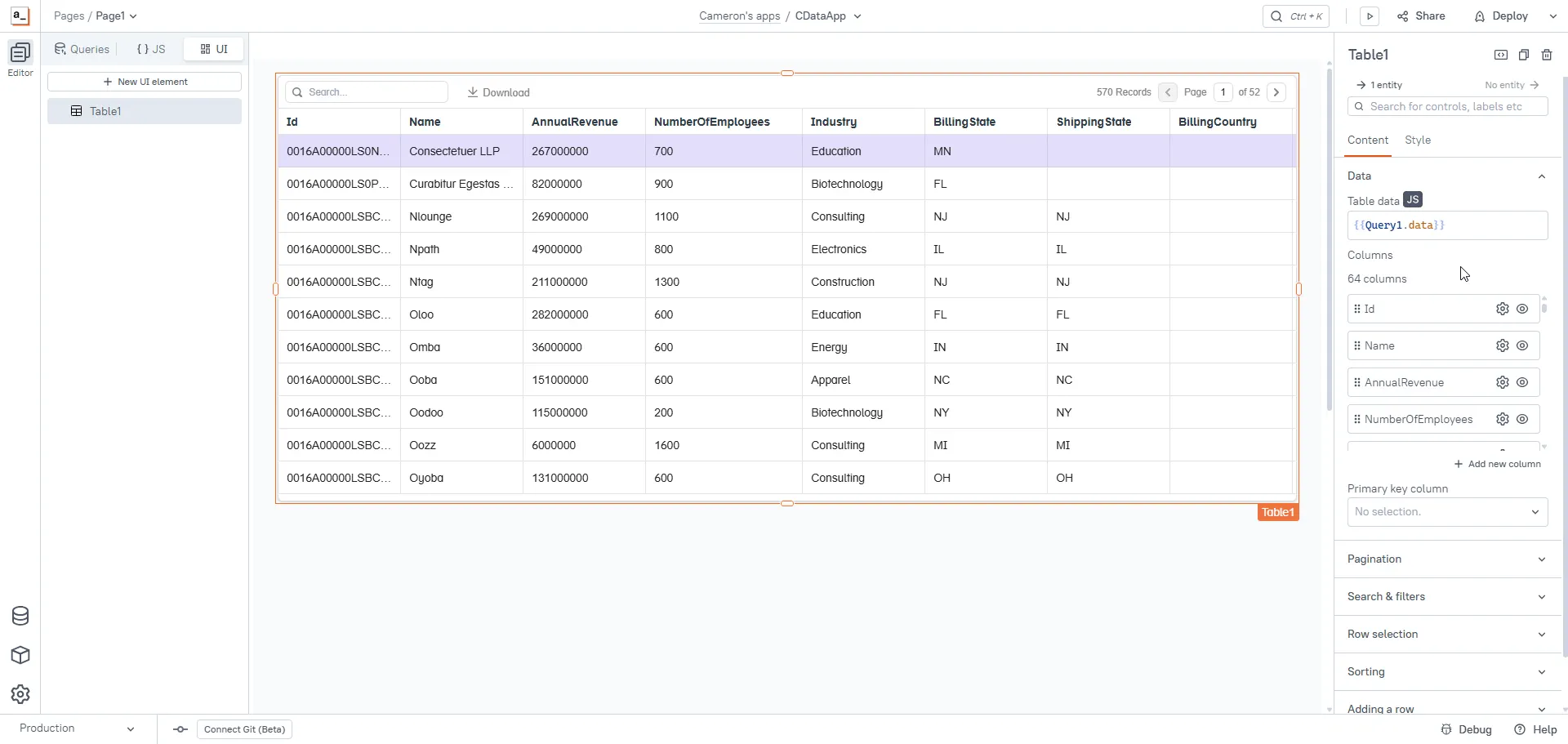
Deploy the application
With the Amazon Athena data connected to the UI elements in the application, we can deploy the Application. To do this, click Deploy in the top-right corner of Appsmith, then the application is opened in a seperate window displaying the Amazon Athena data.
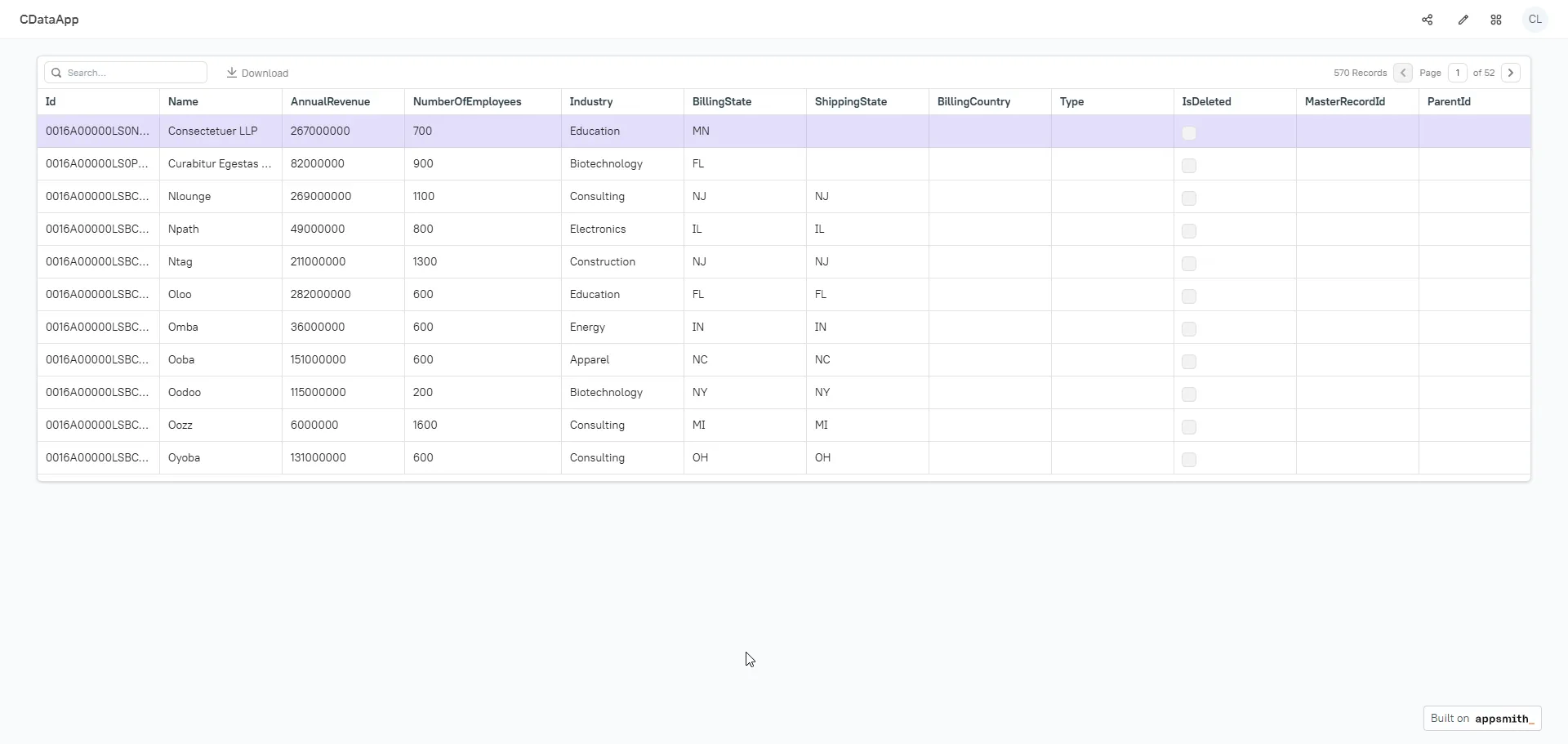
Get CData Connect Cloud
To get live data access to 100+ SaaS, Big Data, and NoSQL sources directly from your cloud applications, try CData Connect Cloud today!
